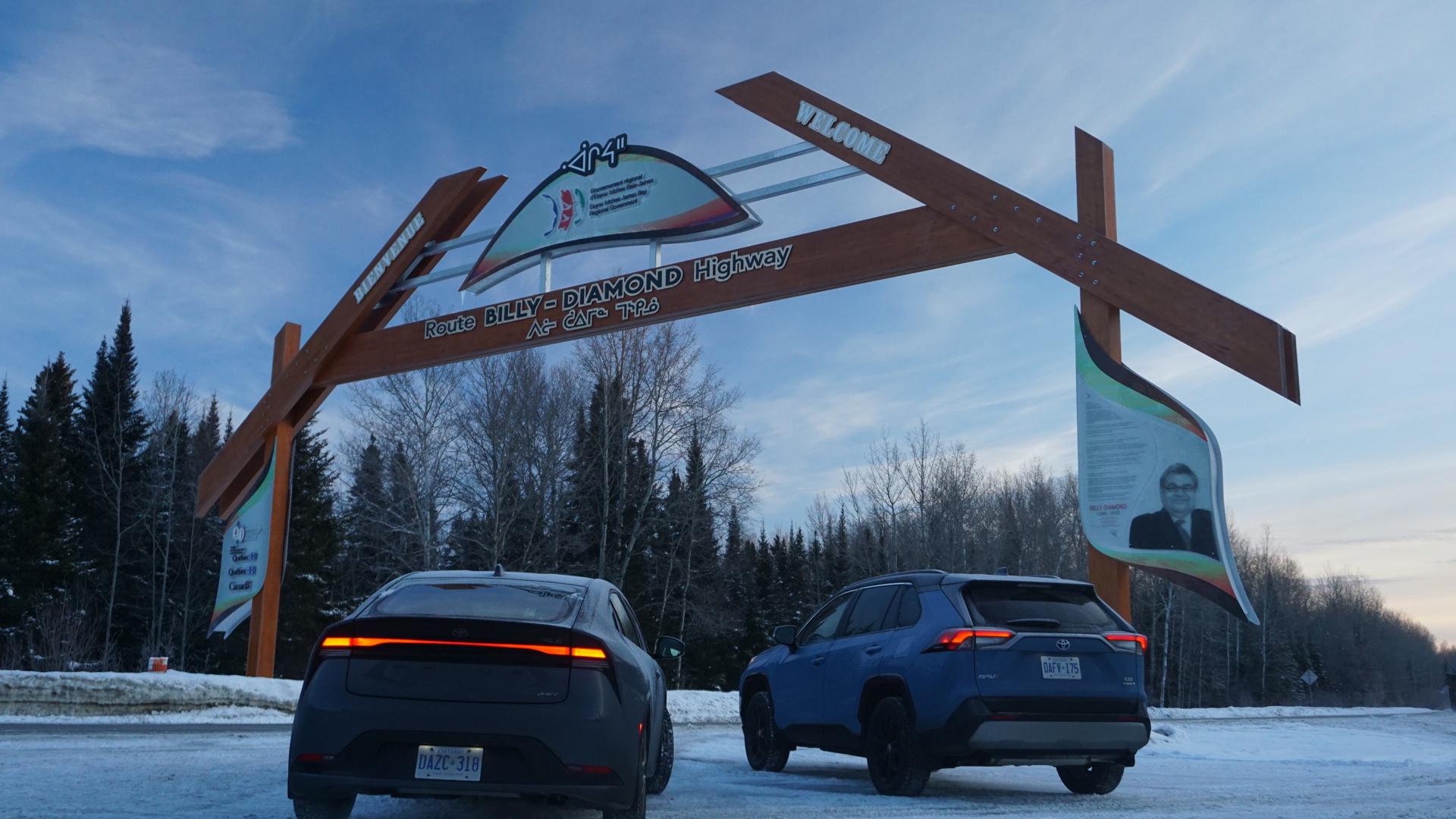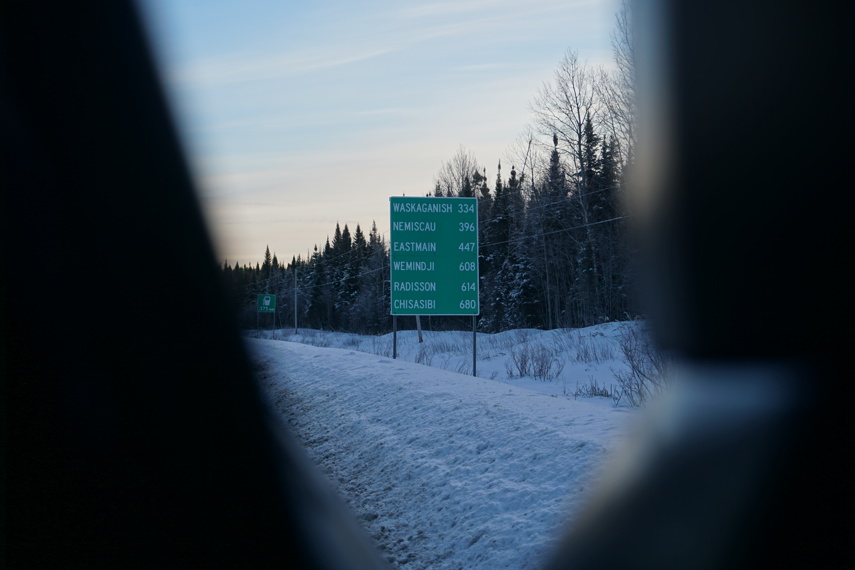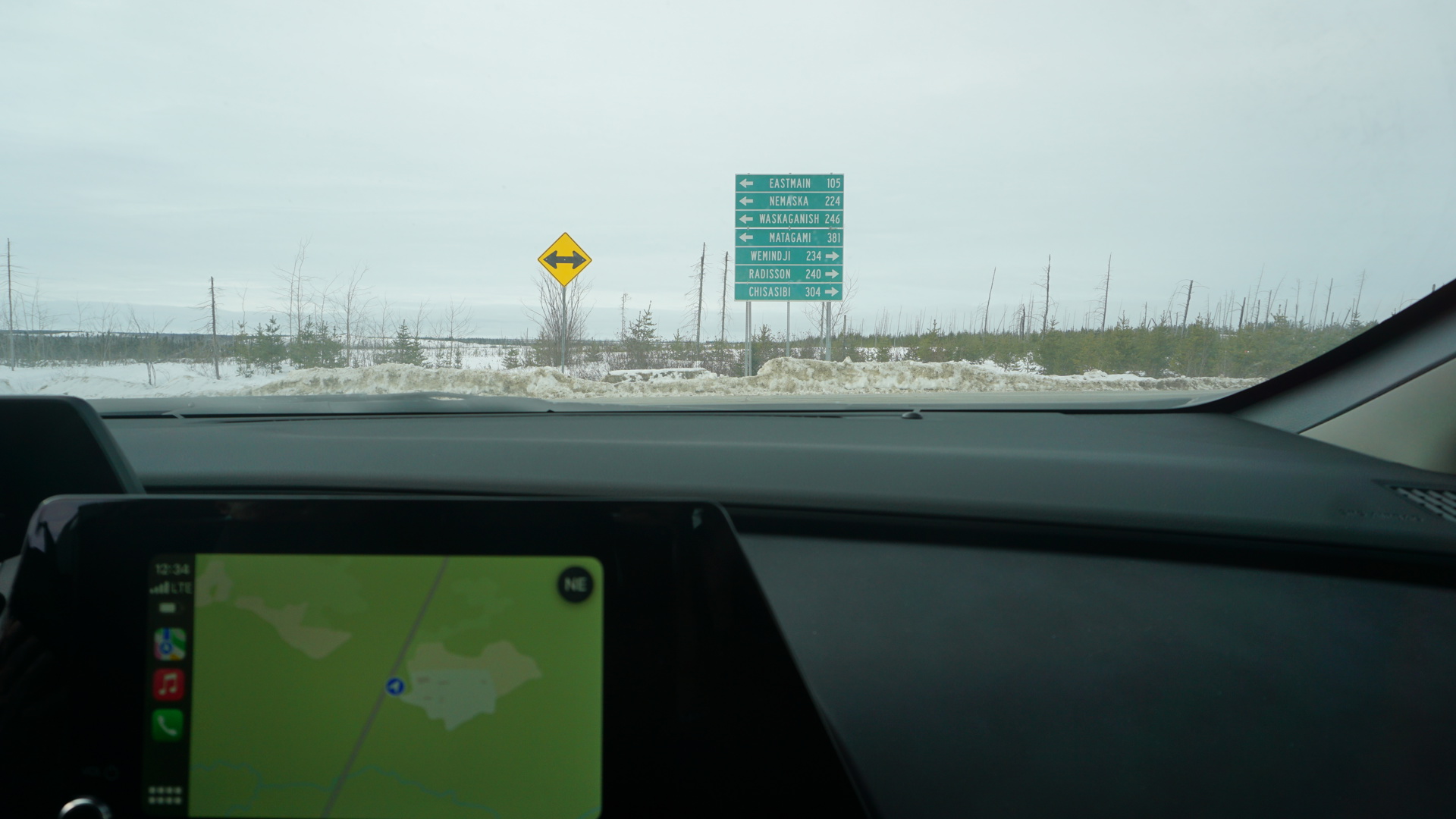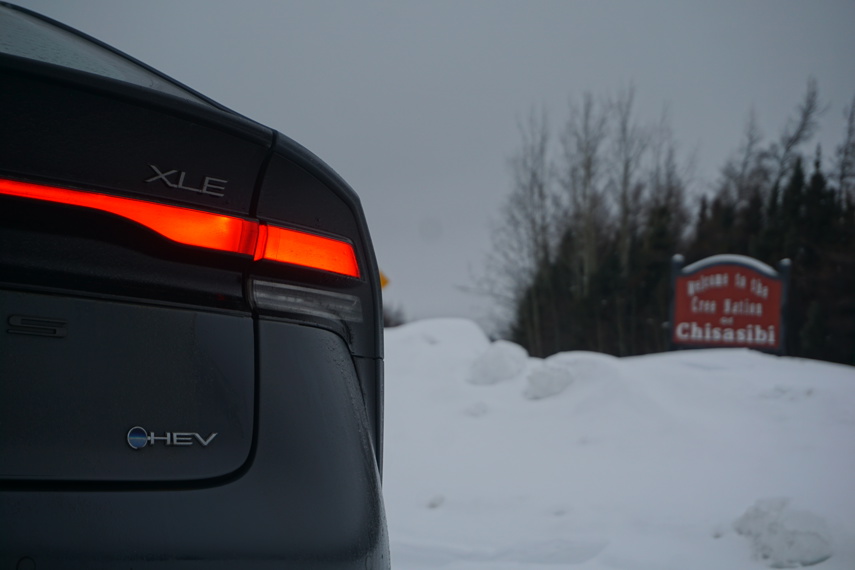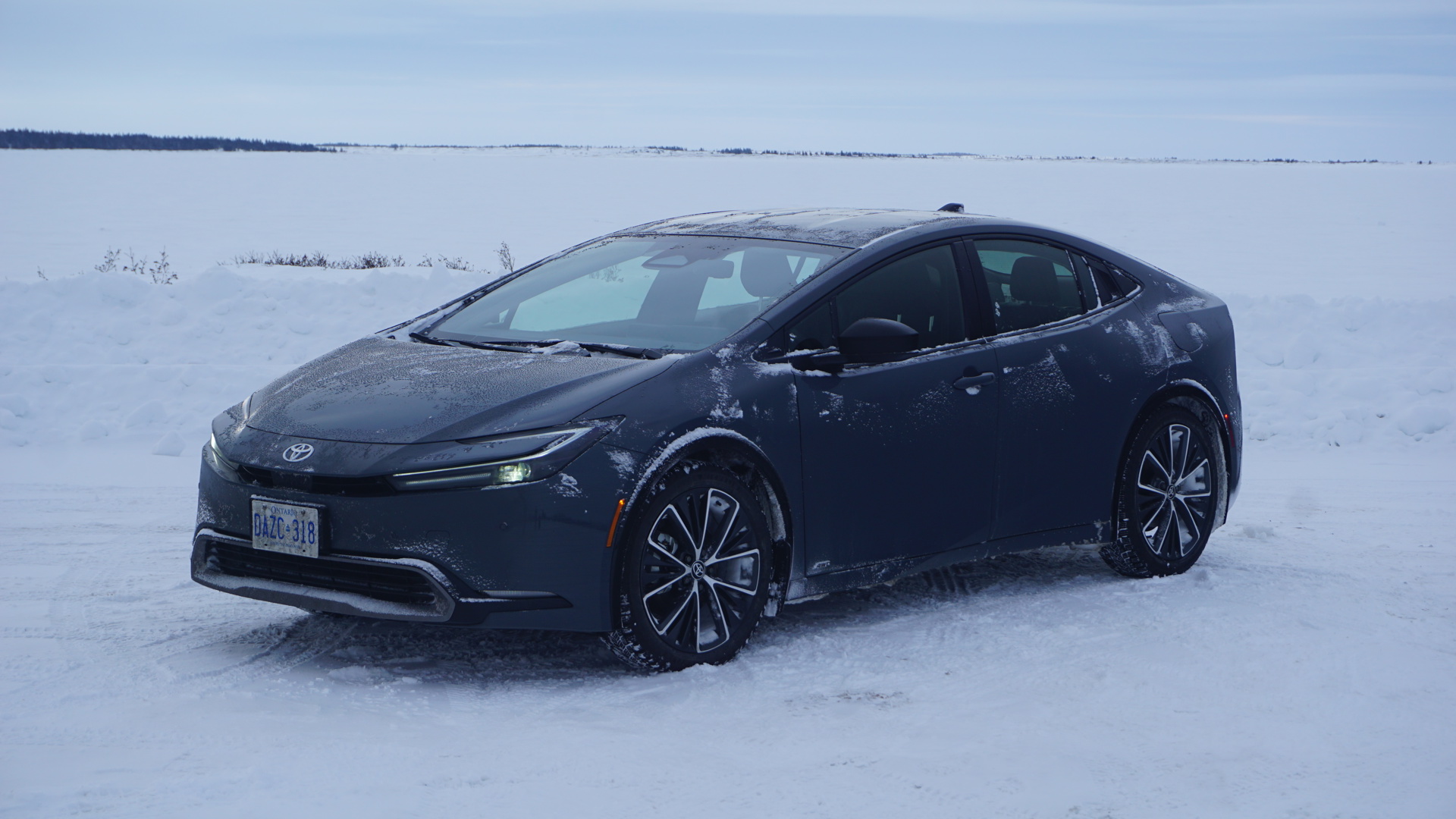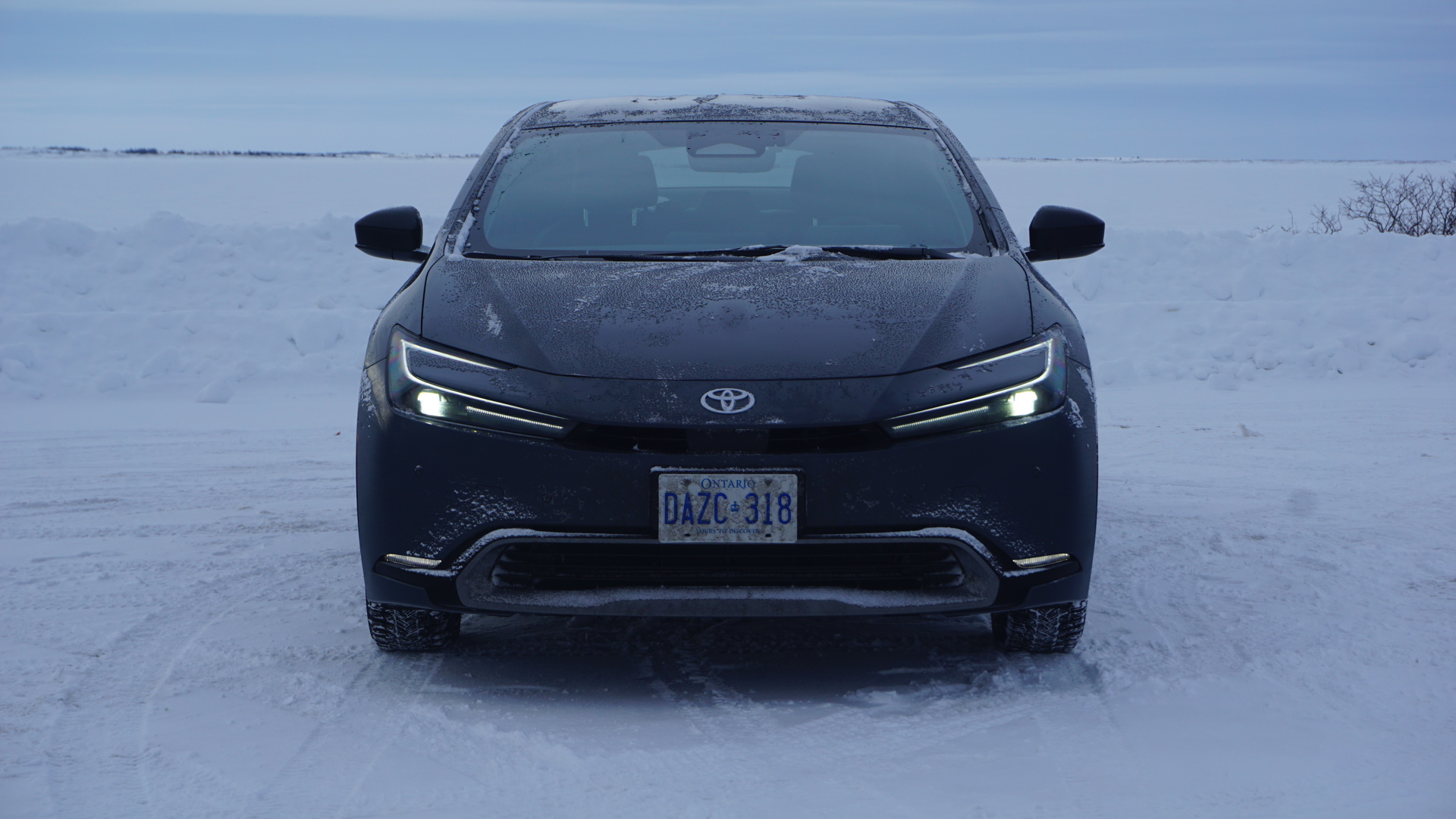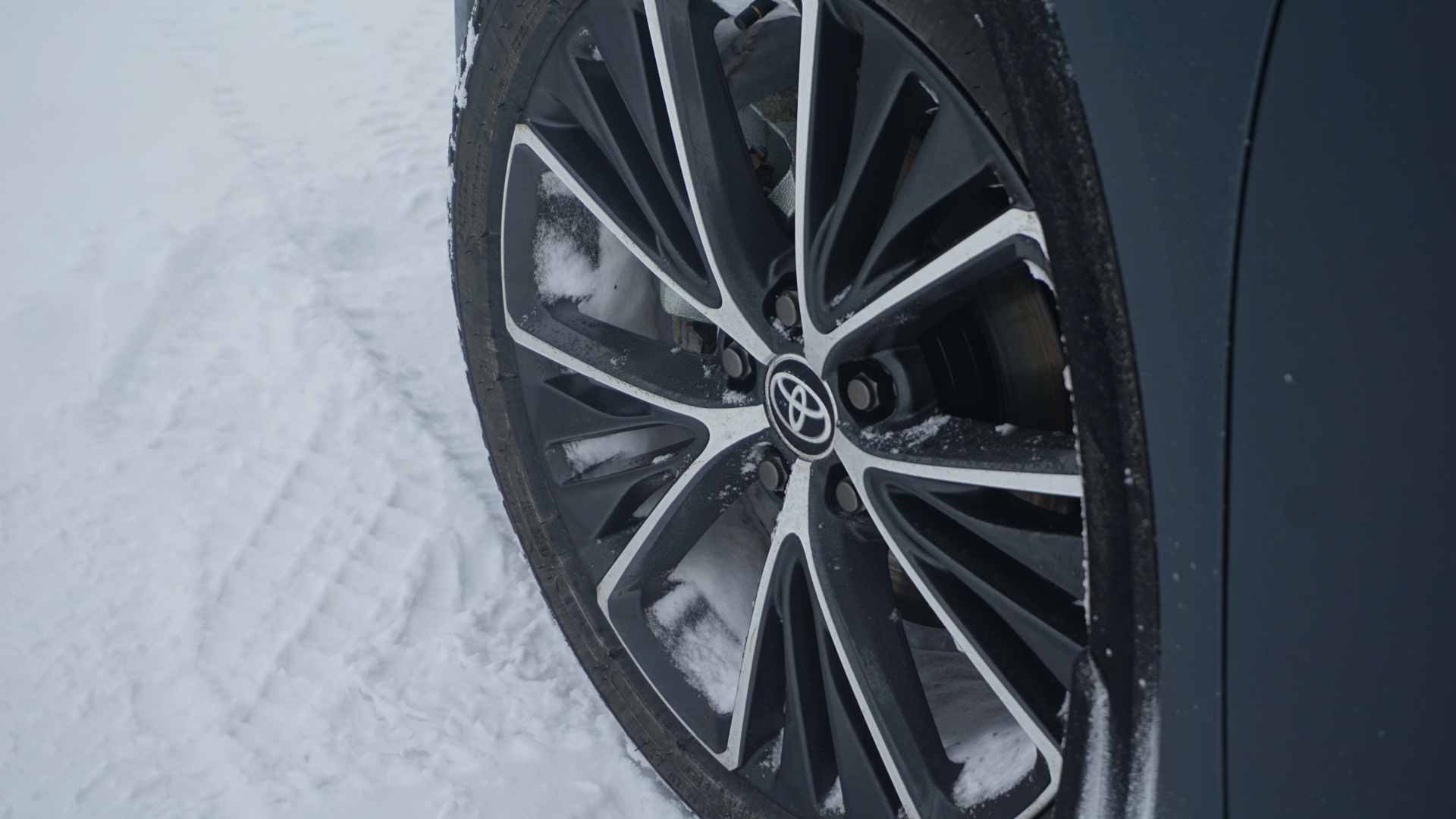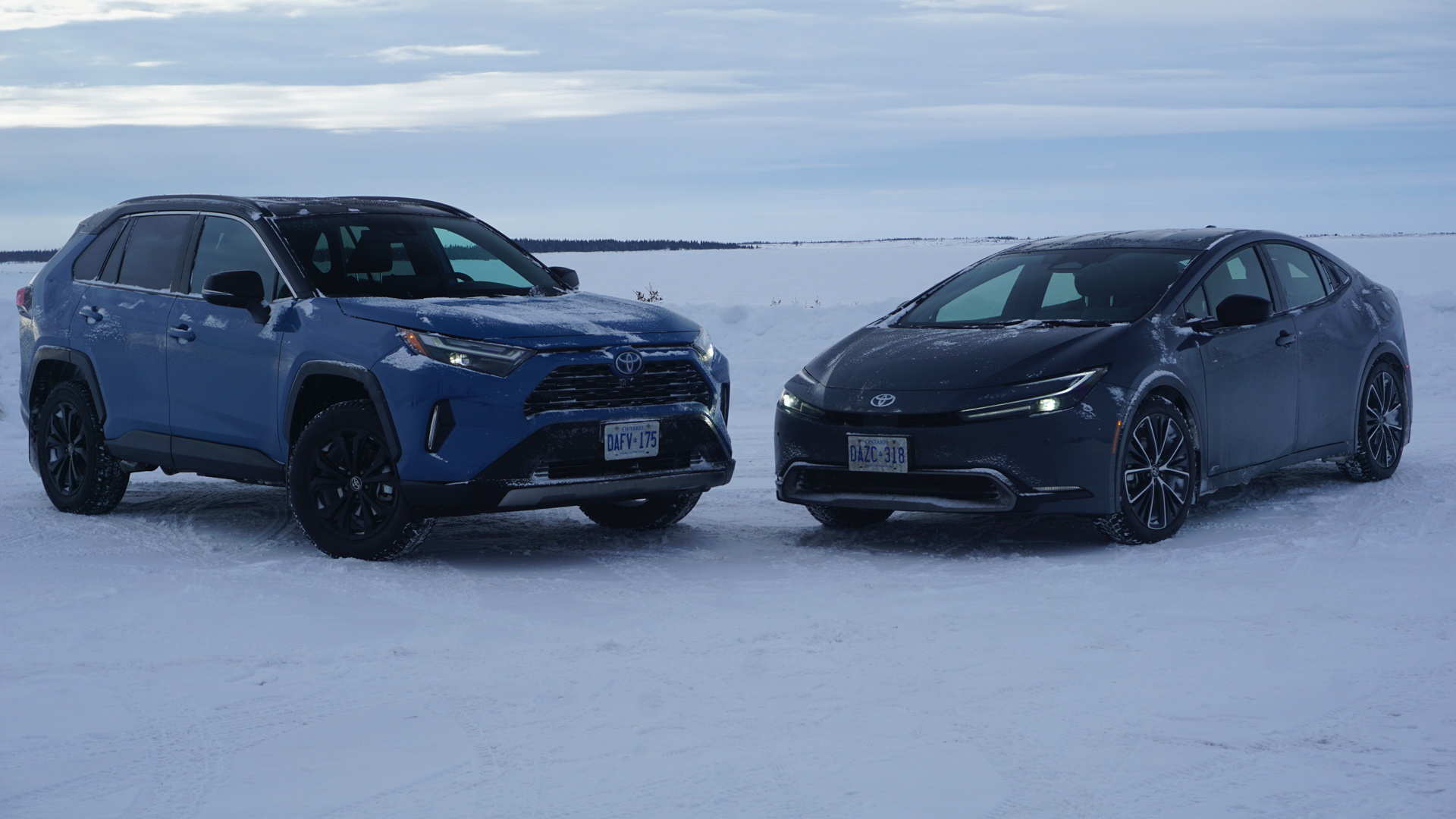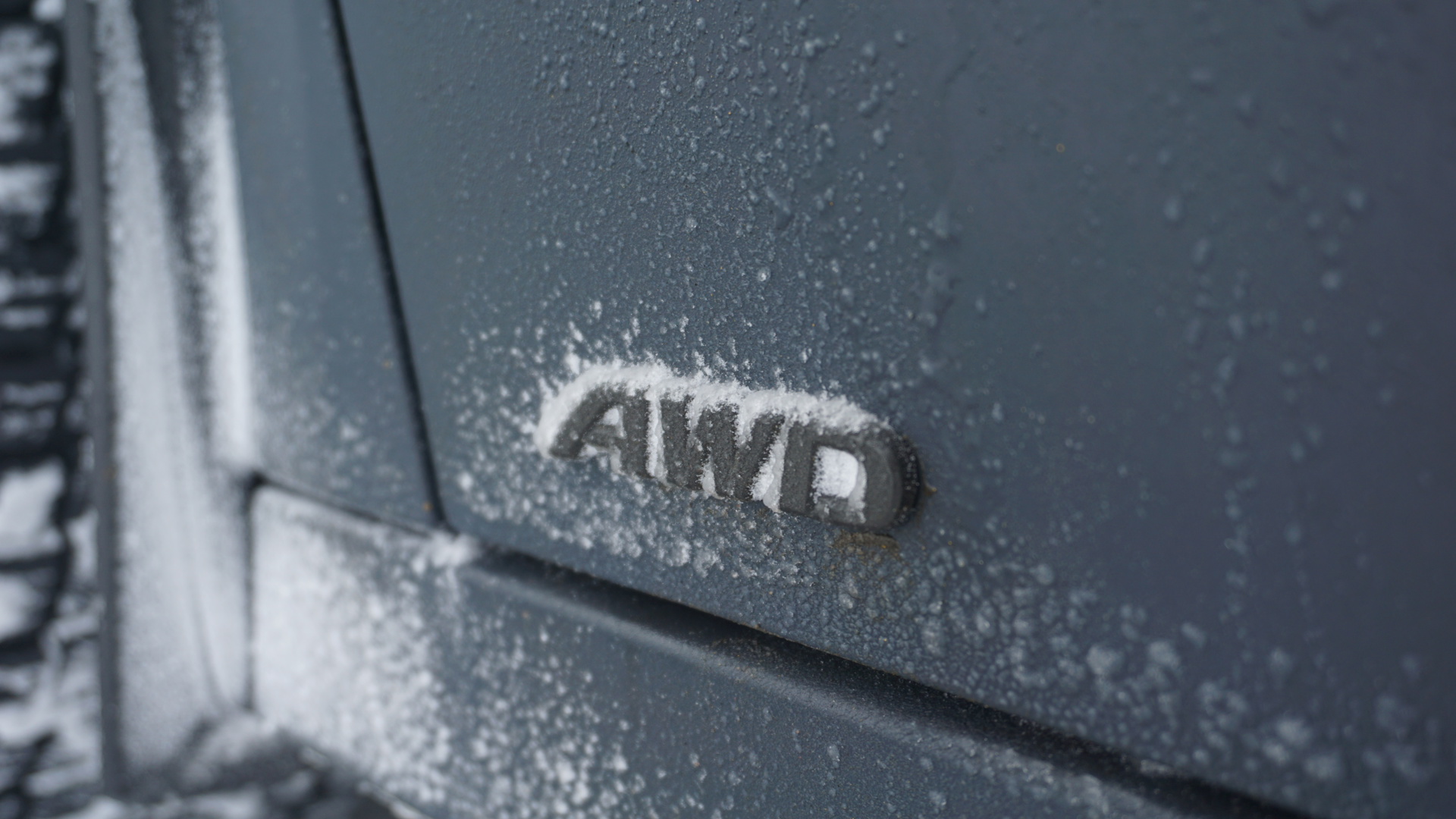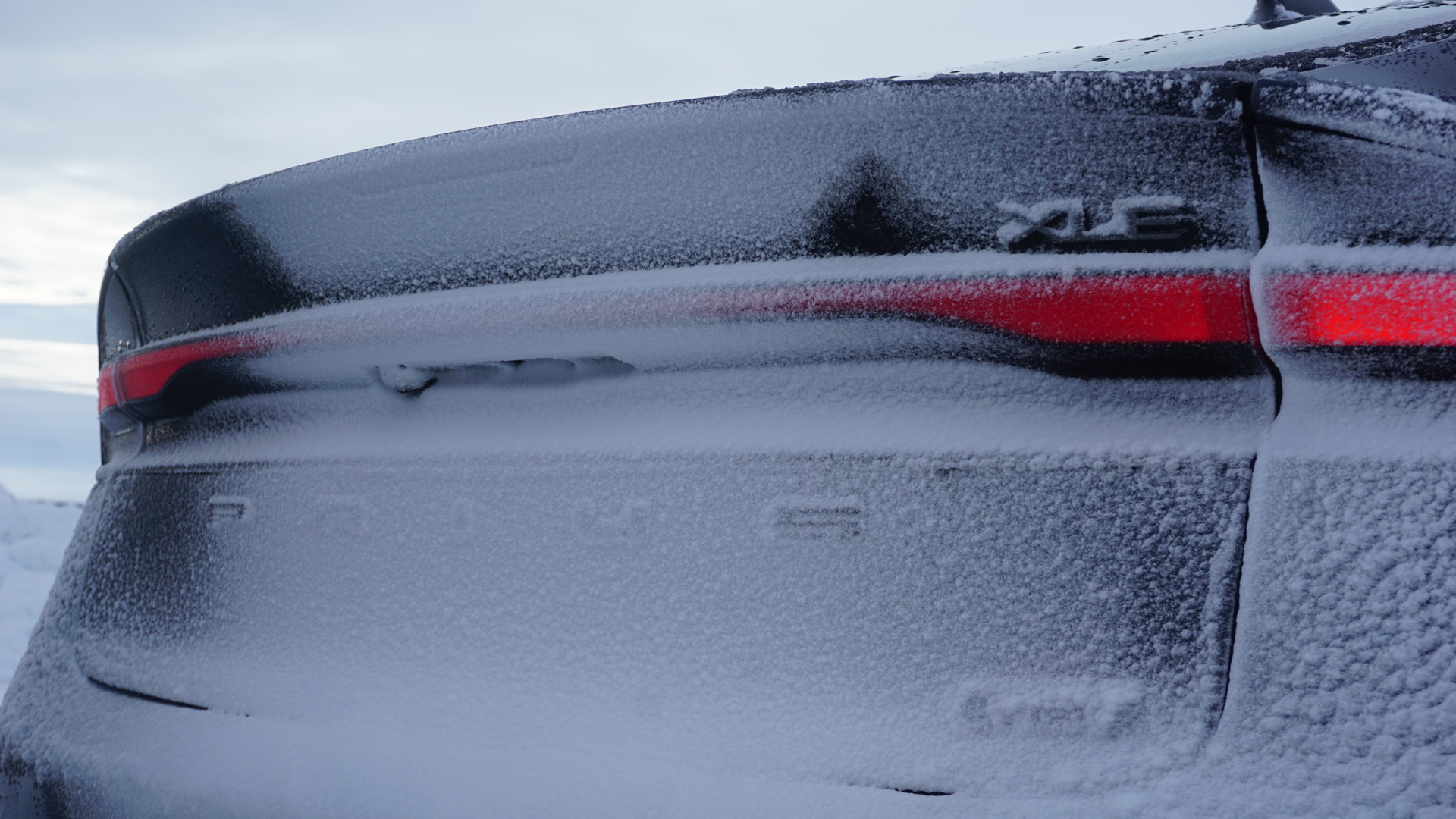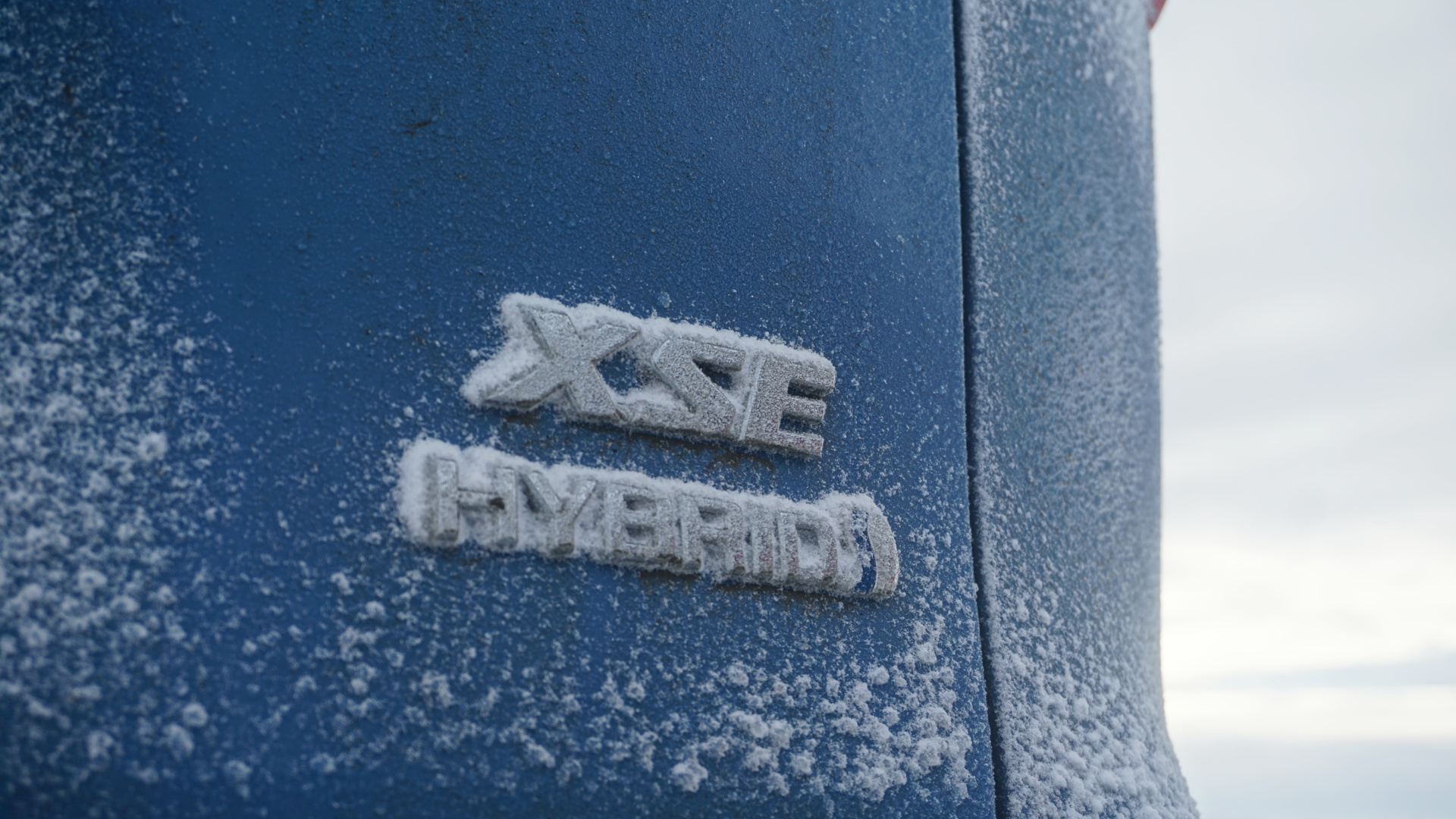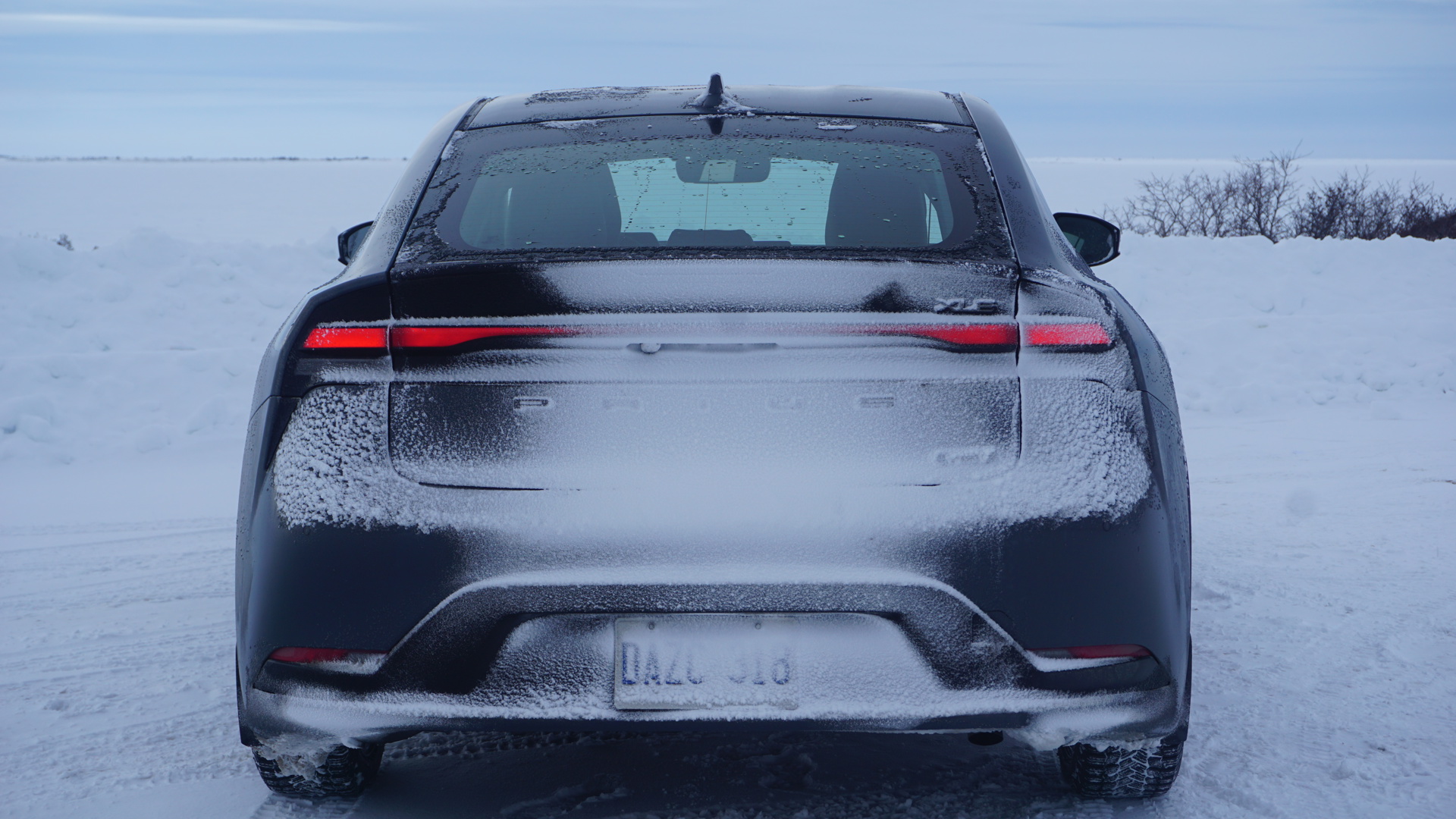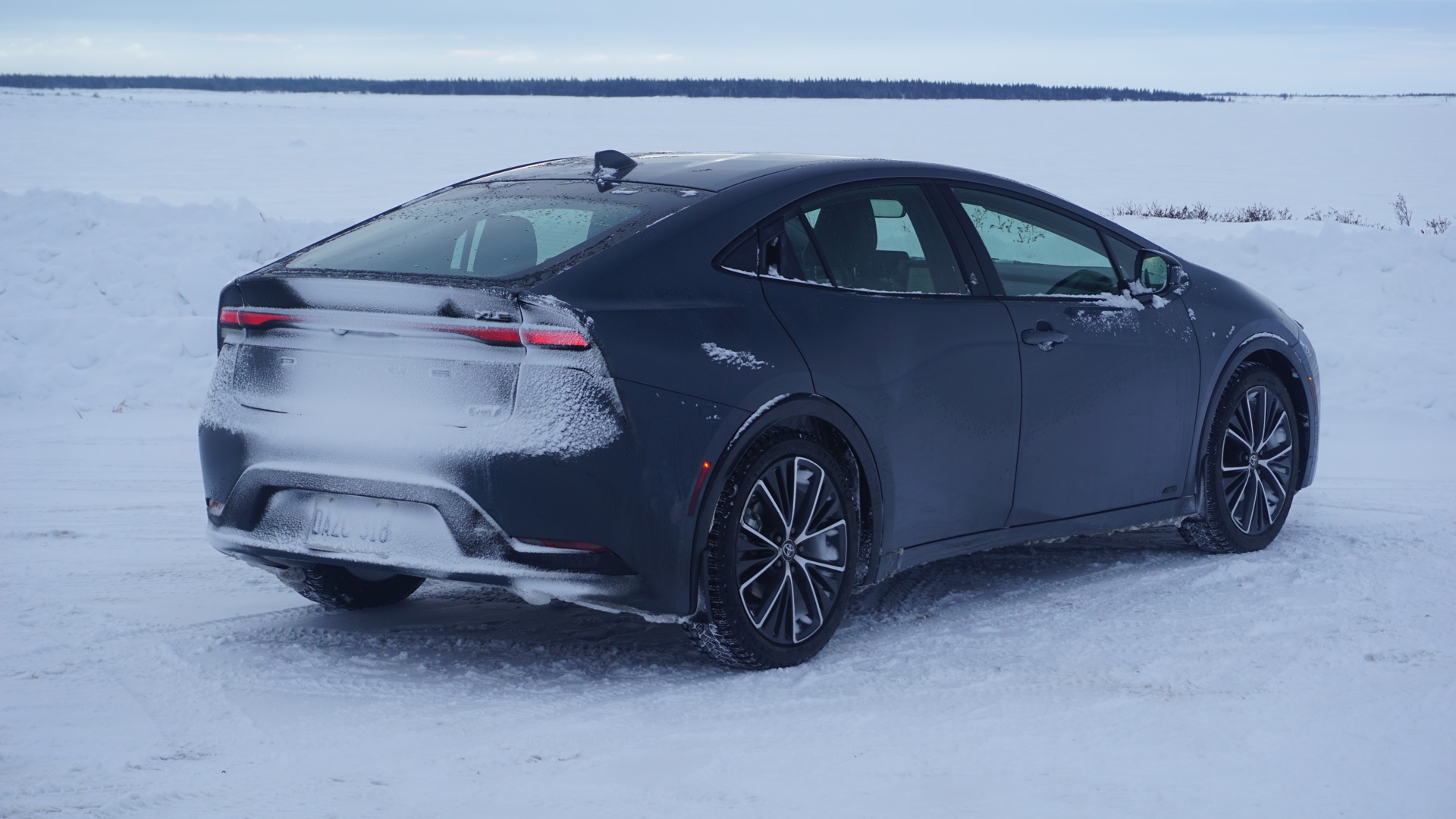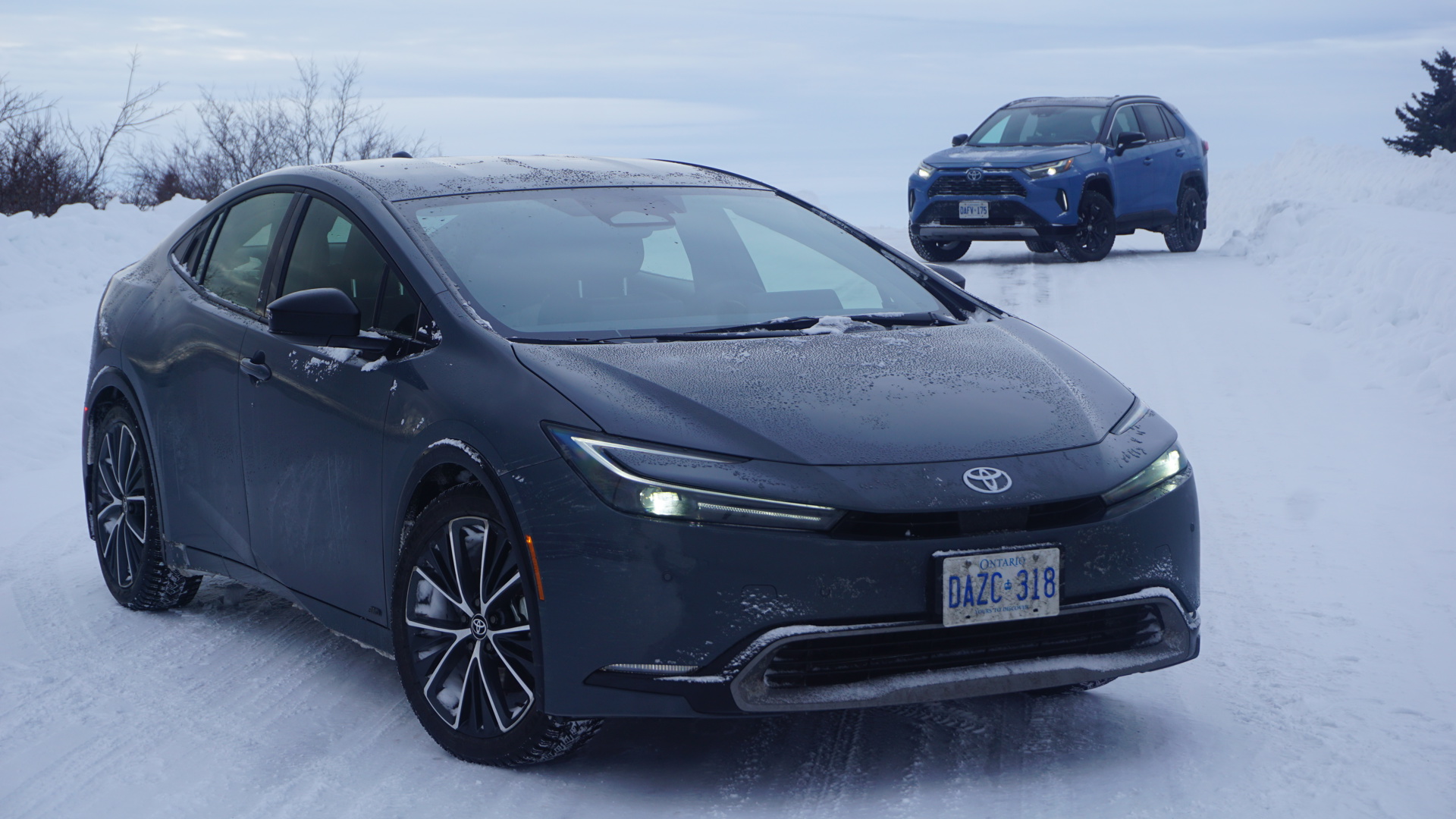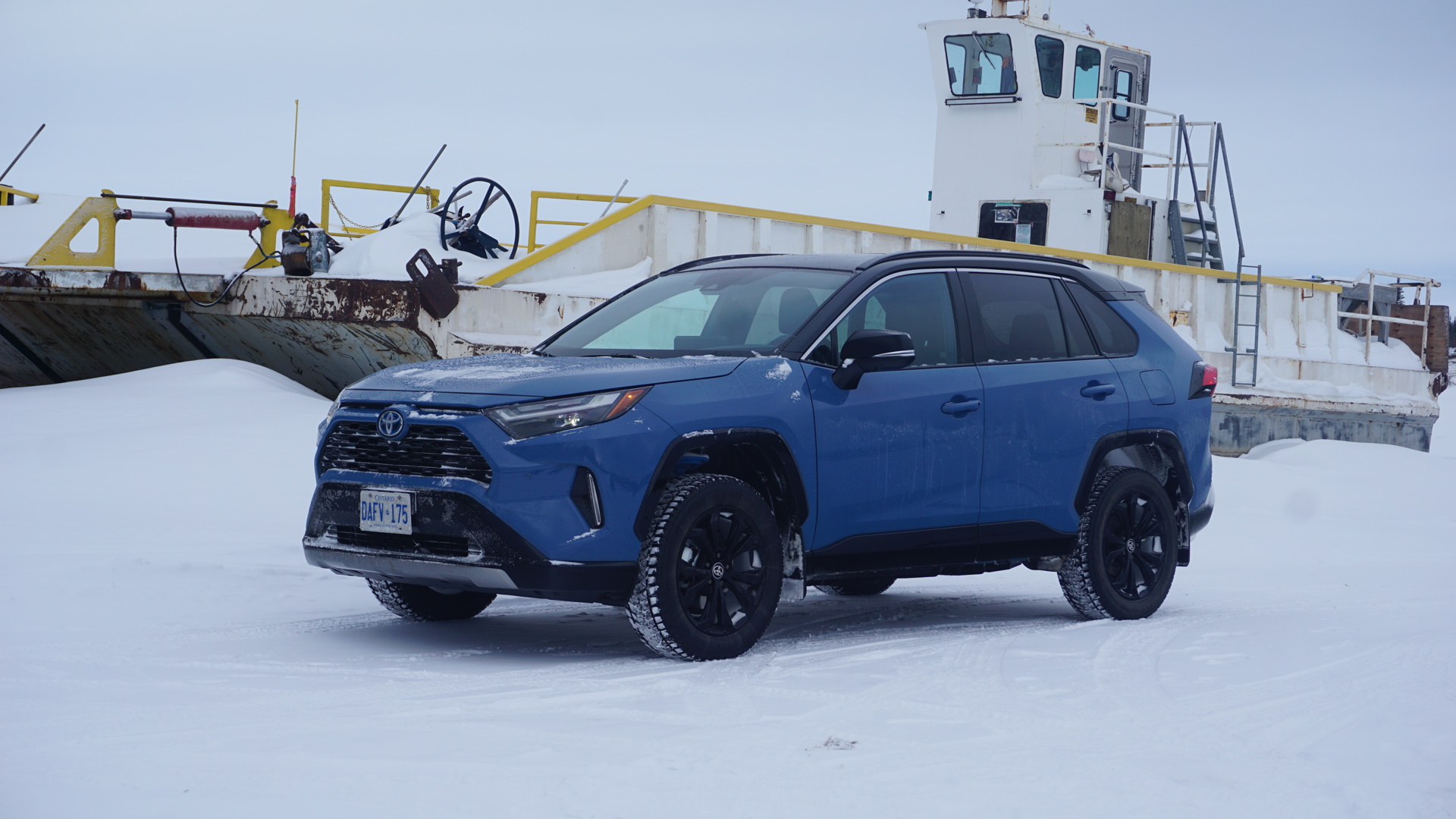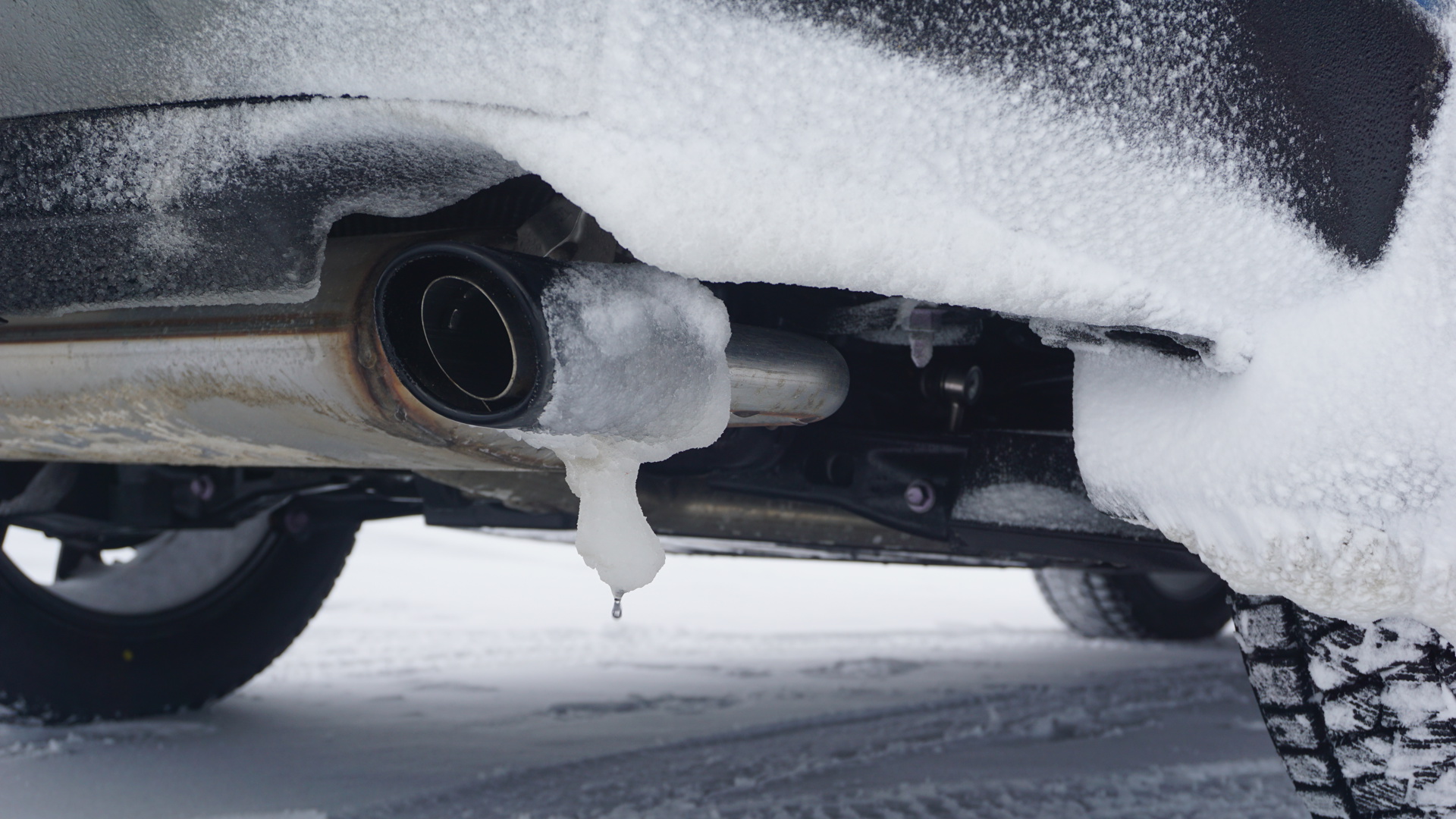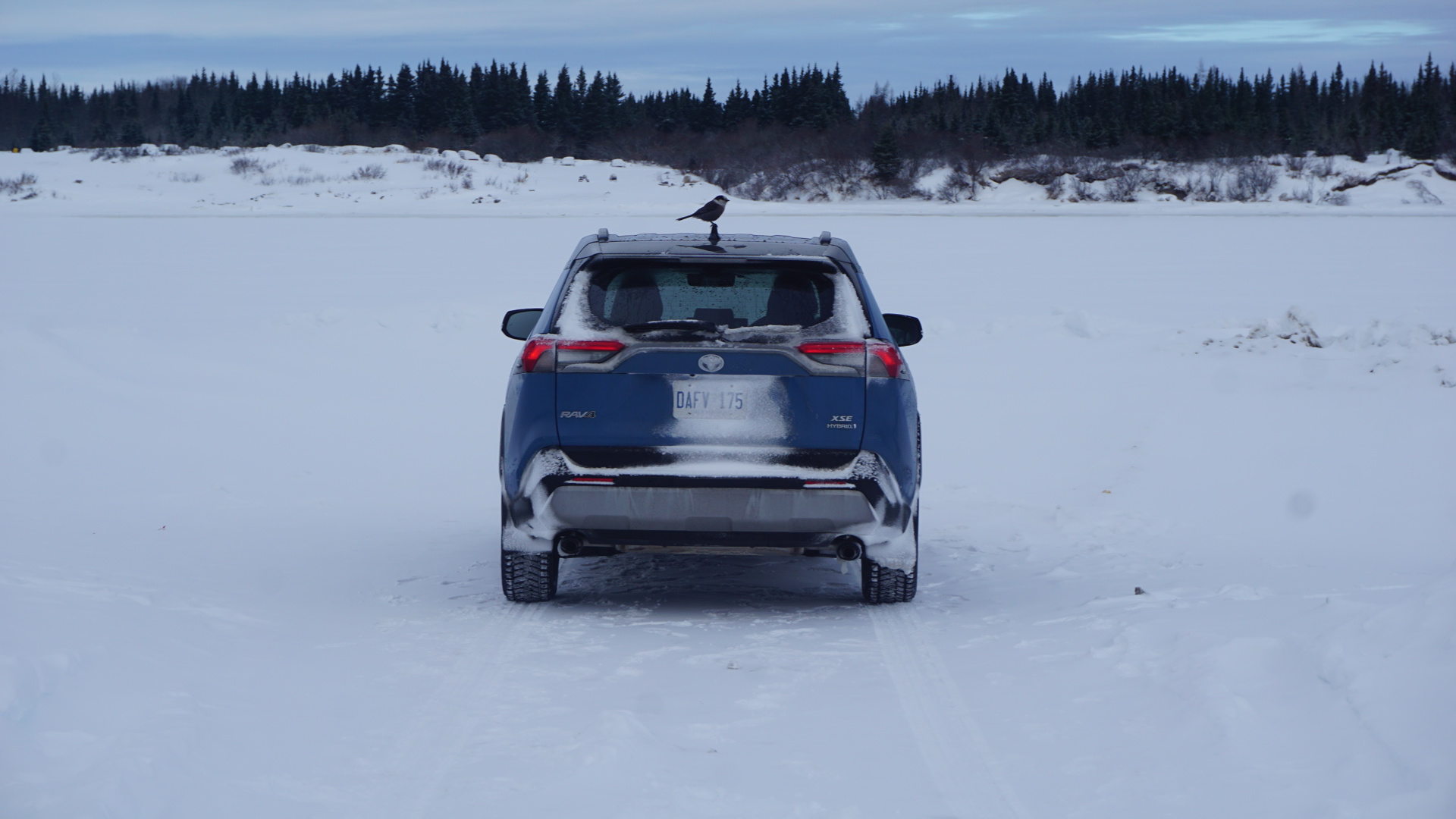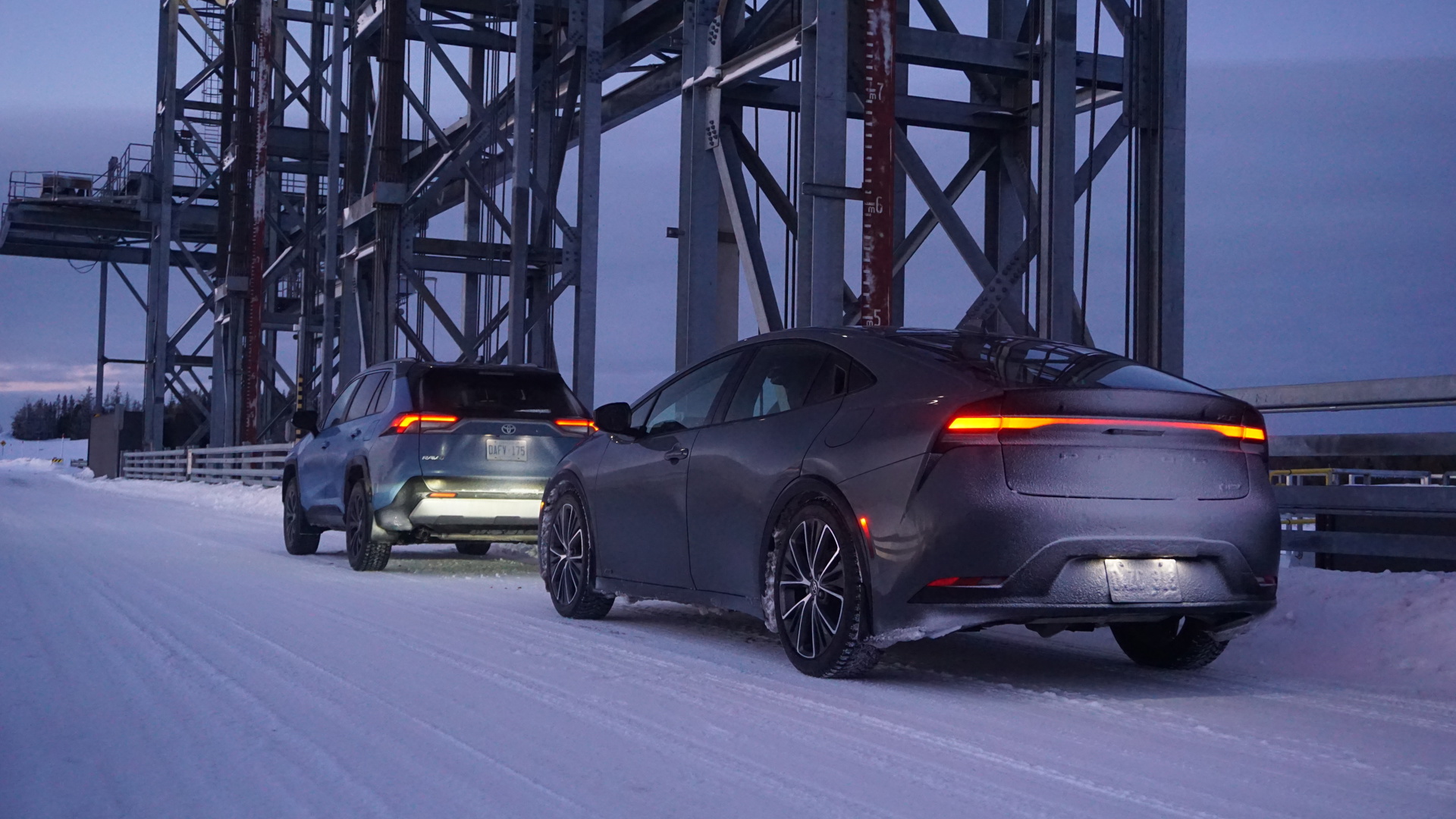When it comes to electrification, me and Toyota Canada’s top leaders don’t exactly see eye-to-eye.
I’m certainly no doomsayer, as I’ve waxed poetically about in the past, but I’m a firm believer that a wholesale shift in the way we get around is what’s needed if we’re going to combat the effects of climate change. Meanwhile, the head honchos at Toyota’s Canadian operations think hybrids have to play a bigger role in our transition to an emissions-free future. And after driving a pair of the automaker’s gas-electric models to the eastern shores of James Bay, I have to agree with them. Well, mostly.
The High Cost of Hydro
Look, I’m still firm in my belief that we need to move away from fossil fuels – and fast – if we’re going to save the planet for future generations to enjoy. But I also don’t think electric vehicles (EVs) are the answer – at least not in their current form. Big, bloated battery packs that take forever to charge are hardly ideal in any part of the country, let alone one as isolated as northern Quebec.
It’s an area that’s entirely inhospitable to electrification – something of a paradox given the region’s history of hydro production. It’s not just about the climate, either; the scarcity of EV charging stations is alarming, with their frequency thinning in lockstep with the worsening winter conditions during this February drive. In fact, a cursory search – as well as a bit of old-fashioned four-wheeled exploration – turned up a single Level 2 station en route to Chisasibi, Que., some 680 km south. Not even the massive Robert-Bourassa generating station, an enormous hydroelectric facility nearby, offers a public place to plug in.
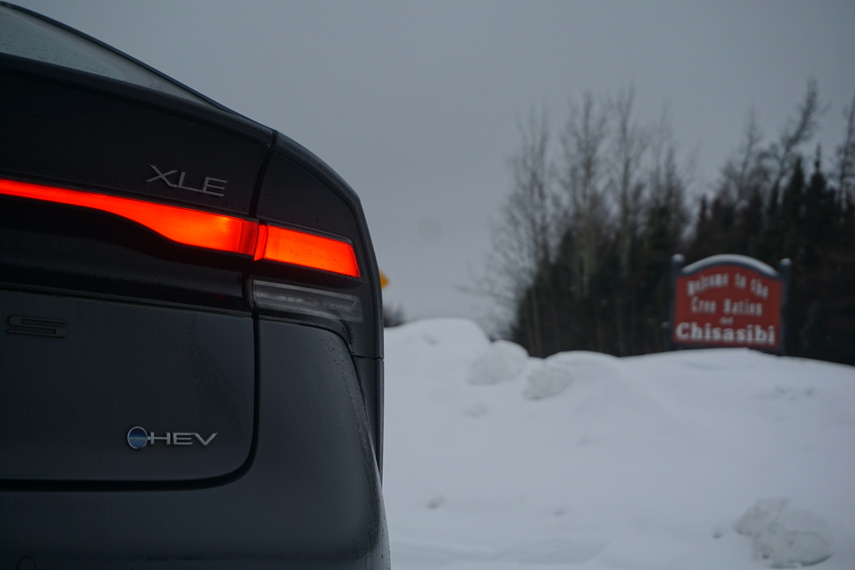
Beyond that bitter bit of irony, the dam and others like it have exacted a heavy toll on the area. In fact, the village of Chisasibi itself was only established after the nearby waterways that were diverted to feed the massive hydro-electric project led to erosion of the island that once served as the local home and hub of the area’s Cree community. Countless square kilometres of traditional Cree territory have been enveloped by the expanded water flow, with local Elder Eddie Pashagumiskum estimating some 80 per cent of his own land has been lost to flooding. There can be no question that providing power to the province’s people has come at a cost.
The Journey Ahead
Piling into our twin Toyotas some 1,600 km due south of our destination, there’s a sense of intrigue that’s tangible amongst the uninitiated, myself included. Our de facto leader on this adventure into the unknown is veteran auto writer Mark Richardson, who last completed this drive about a decade earlier. A lot has changed since then, as he will soon learn, but he’s as eager as the rest of us to hit the road.
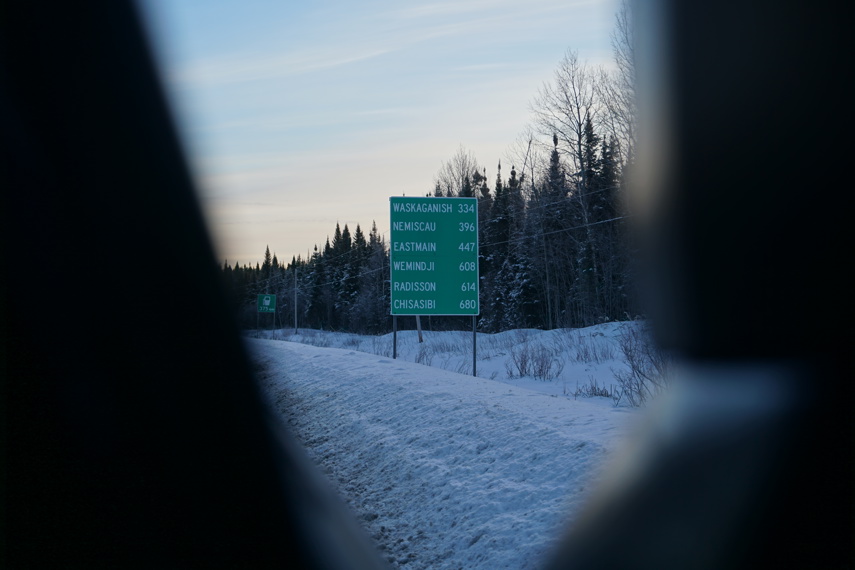
He’s chosen the recently overhauled – and outrageously stylish – Prius as his chariot of choice, while I’ve successfully advocated for taking the gas-electric version of the RAV4. It’s a logical pair for a handful of reasons, not least of which being what they mean to the market as a whole. After all, the Prius is the car that introduced hybrid motoring to the Canadian masses more than 20 years ago, while the RAV4 is the country’s best-selling vehicle that isn’t a pickup truck.
Two others have joined us on our journey, which is equal parts brilliant and bonkers, if you ask me. After all, it takes a certain amount of bravado to sign up for something like this, with more than 3,000 km of driving planned over the following few days. But then when opportunity knocks, it’s long been my policy to open the door. I’m glad the group of us, including German journalist Jens Meiners, seems to share the same outlook.
It bears mentioning once more that it’s February, but you wouldn’t necessarily know it based on the conditions. Oh, sure – we’re prone to weird and wacky weather across this great nation no matter the time of year, but this feels different. Weeks without snow and temperatures well above freezing are far from any kind of normal I’m aware of, British Columbia’s Lower Mainland and Vancouver Island being the lone outliers. Call it a twist of fate, if you want; I refer to it as climate change in full effect.
The folks I spoke with in and around Chisasibi aren’t afraid to use that term, either. As we’ll soon discover, the ice on James Bay is far thinner than they remember, barely measuring a metre thick, this after a summer marred by devastating wildfires in the area. They’re well aware of the crisis we’re all confronting in real-time, and it’s one with wide-ranging impacts around these parts in particular.
The Reliable RAV4
But back to the drive. We’re leaving Orillia, Ont., just as day breaks, getting the sort of head start we’ll need to make it to Matagami, Que., by nightfall. That’s a little more than halfway to our destination, and it happens to be where I spot the last EV charger on the road to Chisasibi. I’m in the RAV4 with friend and fellow journalist Kyle Patrick, whose current employer is one at which I cut my teeth in this business a handful of years ago.
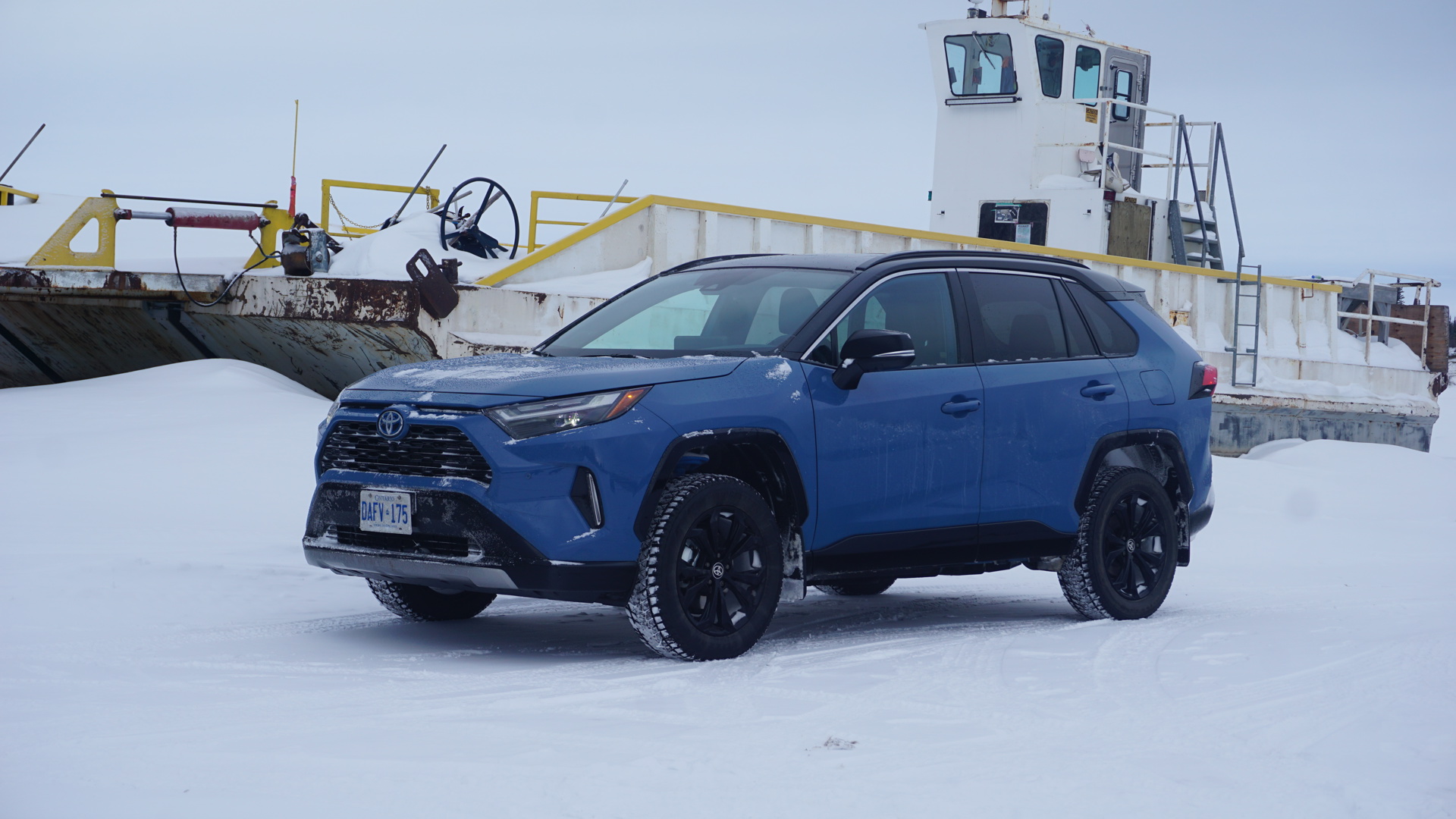
We’re both unsurprisingly impressed with the way the RAV4 is handling the task at hand. Few would call this crossover exciting, but that bland existence – along with a sterling reputation for reliability – has earned it many sales accolades in Canada and beyond. Supply issues aside, more than half of the 74,000 or so units sold across the country last year were either the plug-in version dubbed the Prime or this conventional hybrid, according to Toyota, and it’s easy to understand why.
Beyond our constant battle with the wireless Apple CarPlay connection, a problem that also plagued the Prius, everything about this crossover just makes sense. OK, the climate control buttons are tiny, as is the text identifying each one’s function; but if there’s a more straightforward entry in the segment, I can’t name it. Simple, spacious, and disarming to drive, this Canadian-made machine is a model of on-road diplomacy.
We have, however, picked up on a troubling trend that will last all 3,400 km of this trip. Despite an official combined consumption rate of 6.4 L/100 km, we’re burning through fuel at a pace that’s 25 per cent higher. Chalk it up to the cold conditions and triple-digit speeds at which we’re travelling, but it certainly takes away from the hybrid-over-EV argument, with this crossover going through more gas than it should during this drive.
A Surefooted Sedan
The same is true of the Prius, which finishes the trip having burned 6.0 L/100 km compared to the 4.8 it’s rated for. Even so, that’s a reasonably low number that allows us to make the most of the tiny 40-litre fuel tank this car has been fitted with. Naturally, it means less outright cruising range than the RAV4 offers; but then with places to refuel becoming fewer and farther between as we work our way north, keeping the tank topped up is a must.
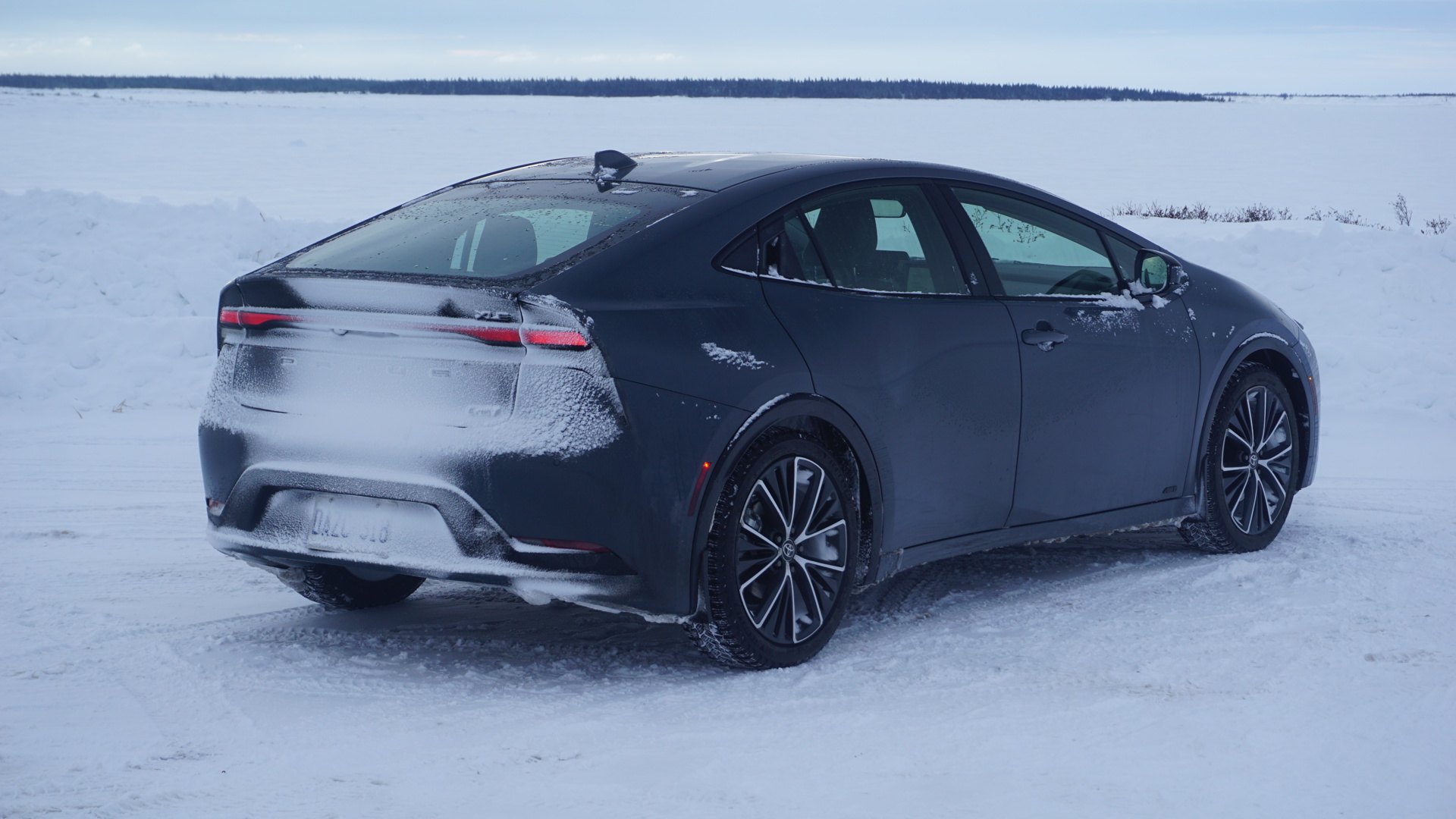
There’s no question the Prius is a city car first and foremost, but that doesn’t mean it can’t hold its own on the highway. While it can, over time, leave extended stretches of porous pavement reverberating through your palms and posterior long after you’ve climbed out from behind the wheel, the suspension is supple otherwise and soaks up bumps in the road with great effect.
Its combination of now-standard all-wheel drive and requisite winter tires this time of year – not to mention in this particular province – makes the Prius a surefooted companion as we dodge the dozens of white birds disguised against the snow-covered surface of the road ahead. (Well, most of us avoided them; the one we came to call the Ptarmigan Pterror wasn’t so lucky.)
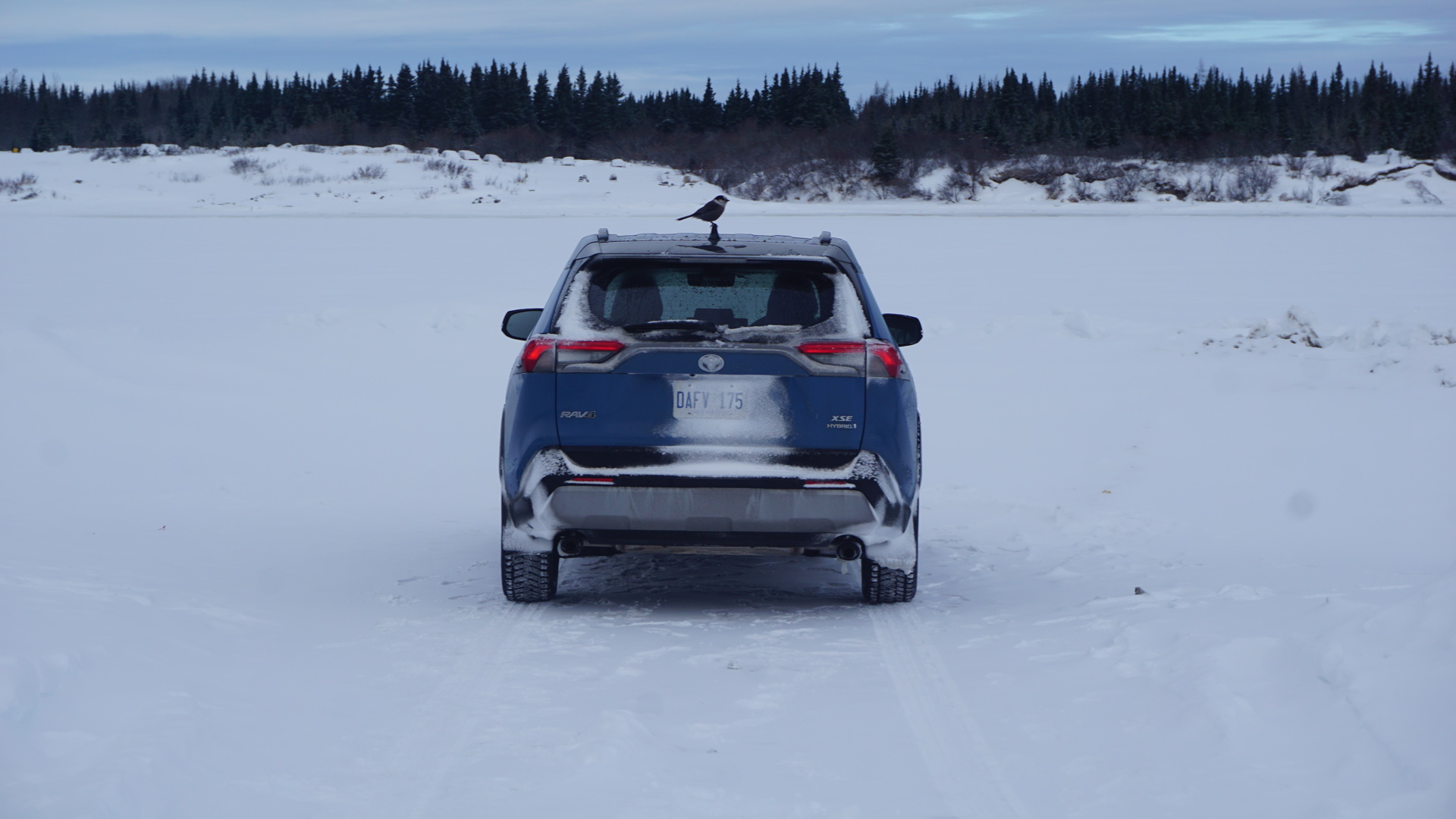
Not once was there an unwanted waggle or slide as we made our way along the winding road connecting Matagami and Chisasibi – an impressive accomplishment given the conditions. It’s part of the Prius’s specialness that extends past its newness. This is a car that’s comfortable, cool, and confidence-inspiring, all three of which may be firsts for this gas-electric sedan.
Electric All-Wheel Drive
What makes Toyota’s approach to its hybrids unique is the way in which all-wheel drive is employed. Both the RAV4 and Prius feature what the automaker calls “electric on-demand” systems that work entirely independently of the driver’s will, not to mention the rest of the powertrain.
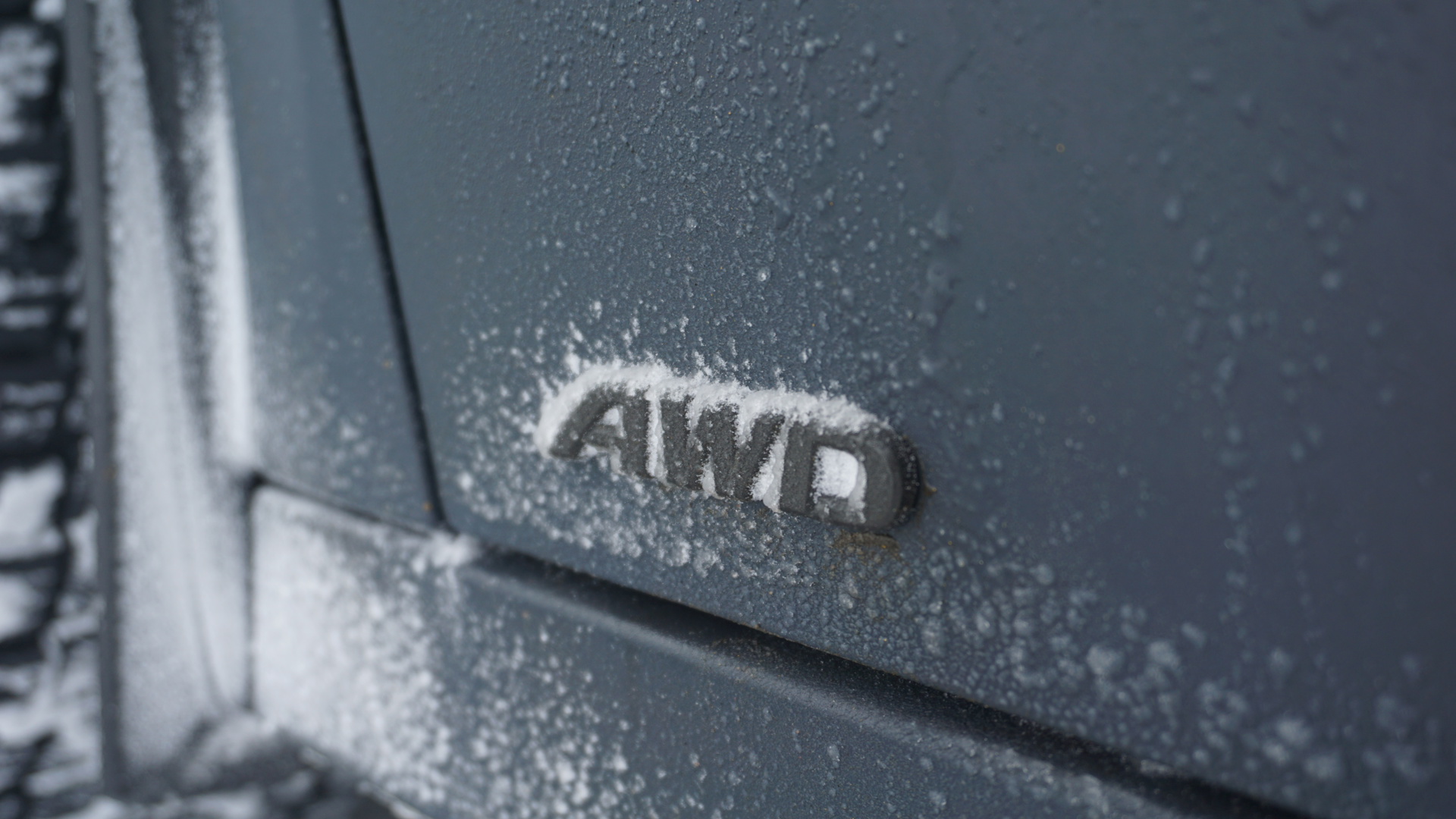
That’s because the stuff that’s under the hood – a gas engine and a pair of electric motor-generator units – has no bearing on what the back wheels are doing, at least not directly. While the same battery is used to power both ends, the dedicated rear electric motor drives just those wheels when required up to highway speeds; after that, it disengages. OK, so not entirely as on-demand as the name might suggest, but then the way both vehicles manage themselves during this drive is that much more remarkable because they’ve spent much of the time operating in front-wheel drive.
Final Thoughts
It’s when we visit the Robert-Bourassa dam in the fading daylight hours that the sheer size of this project is put into perspective. More than 15,000 megawatts of power flows through this currently frozen facility near Radisson, Que., feeding homes and businesses hundreds of kilometres south of here. It looks modest in the distance, but the sheer scale of the spillway is awe-inspiring, dropping 100 metres (328 ft) from its massive reservoir to La Grande river below.
This is the largest hydro facility in North America, responsible for about 20 per cent of Quebec’s entire electrical production – a staggering amount by any measure. Equally jarring is the idea of how much more is going to be needed if we’re to meet the zero-emissions vehicle mandates imposed by the federal and provincial governments that aim to phase out the sale of vehicles like the ones we’re driving.
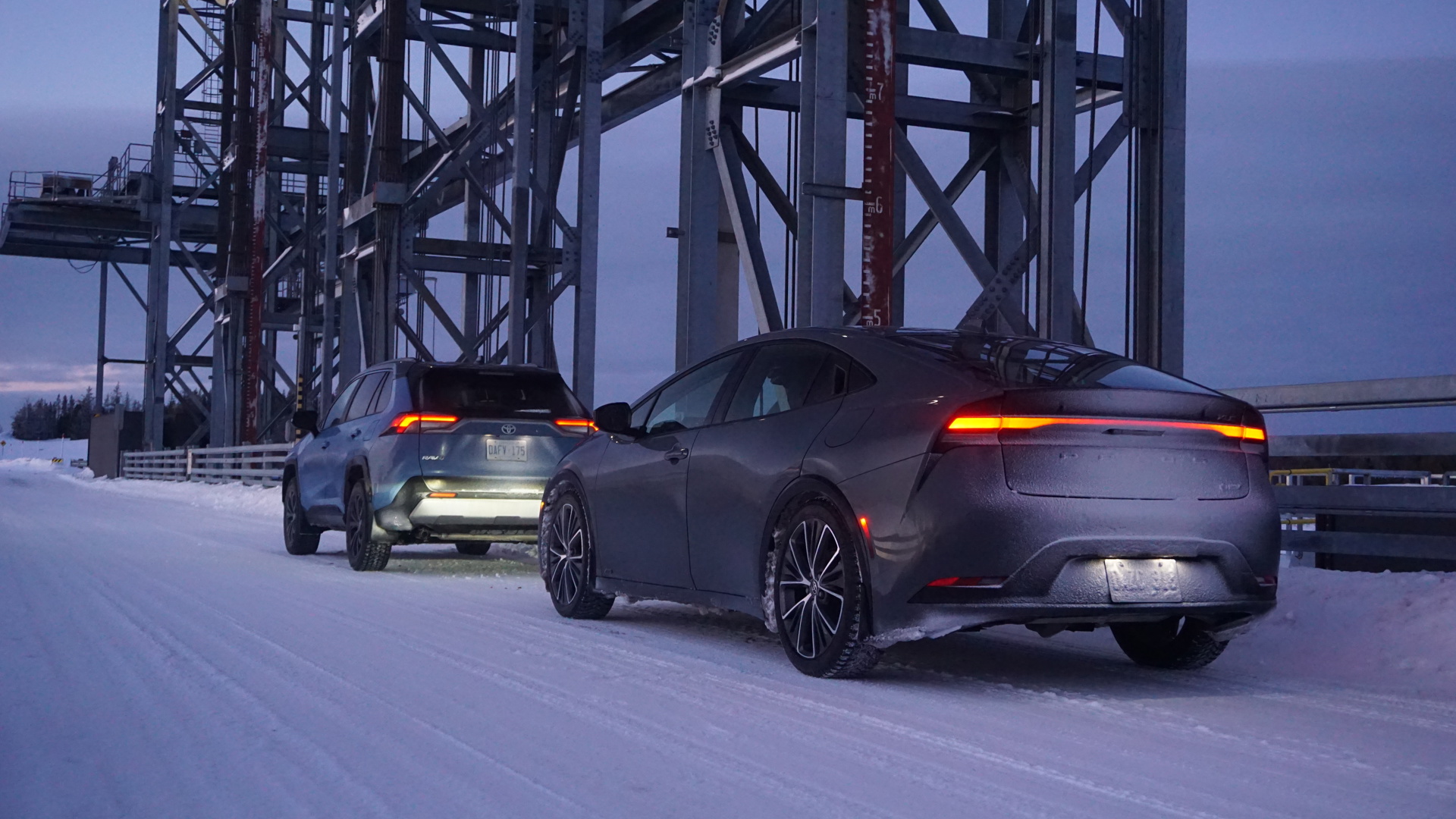
According to the federal target, sales of new gas-powered vehicles will be banned starting in 2035, while plug-in hybrids (PHEVs) will need a minimum of 80 km of emissions-free range to remain on the market. That mirrors the plans in places like the United Kingdom and Norway, the latter of which seems well on its way to achieving its goal this calendar year. But while Norway’s climate isn’t all that different from Canada’s, the Scandinavian nation isn’t nearly as enormous. And while it’s home to more than a few communities nearly as remote as Chisasibi, there’s already charging infrastructure in place to support the government’s plans.
That’s the kind of support that’s currently missing from large swaths of this country, making it undeniably more difficult to achieve the government’s goals. And that brings us back to Toyota’s push for hybrid power.
Of course, this is a company that’s in the business of selling what it currently builds, and it should be treated as such. With just two EVs on the market at the moment compared to about two dozen hybrids spread across the Lexus and Toyota brands, it’s no wonder its leadership is lobbying for the latter.
But then if their claims are true, and the nearly 100,000 “electrified vehicles” – mostly hybrid and PHEV models – both brands sold in Canada last year work out to the same greenhouse gas reduction as putting about 38,000 zero-emissions vehicles on the road, models like the Prius and RAV4 Hybrid (plus their plug-in counterparts) could buy us the time we need to get this right.
